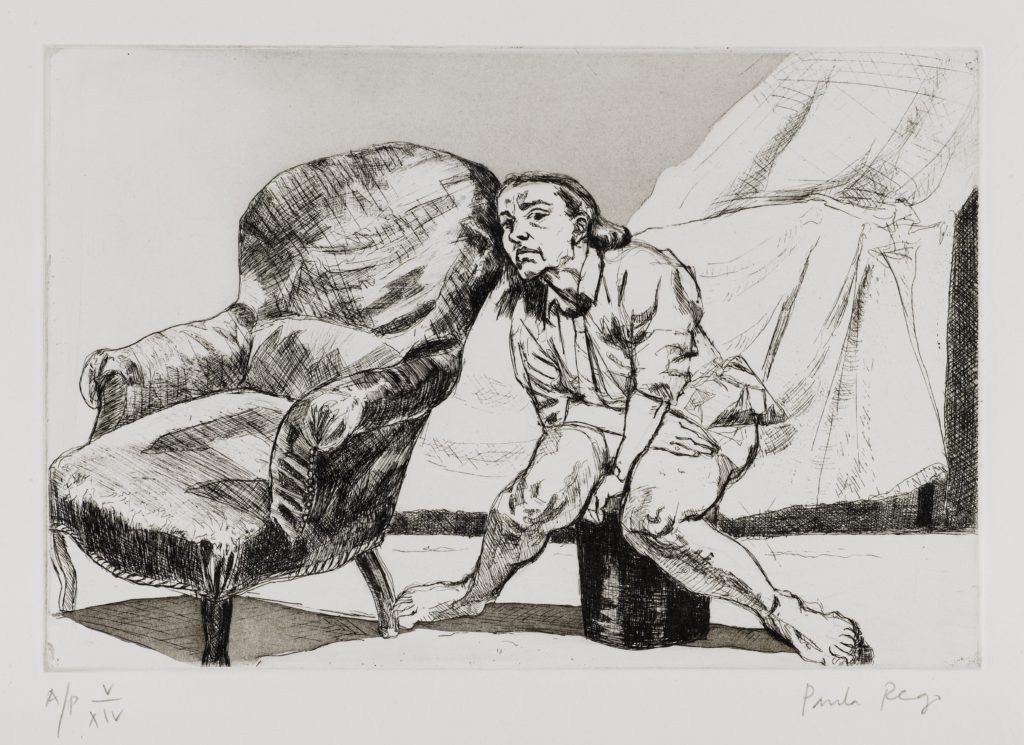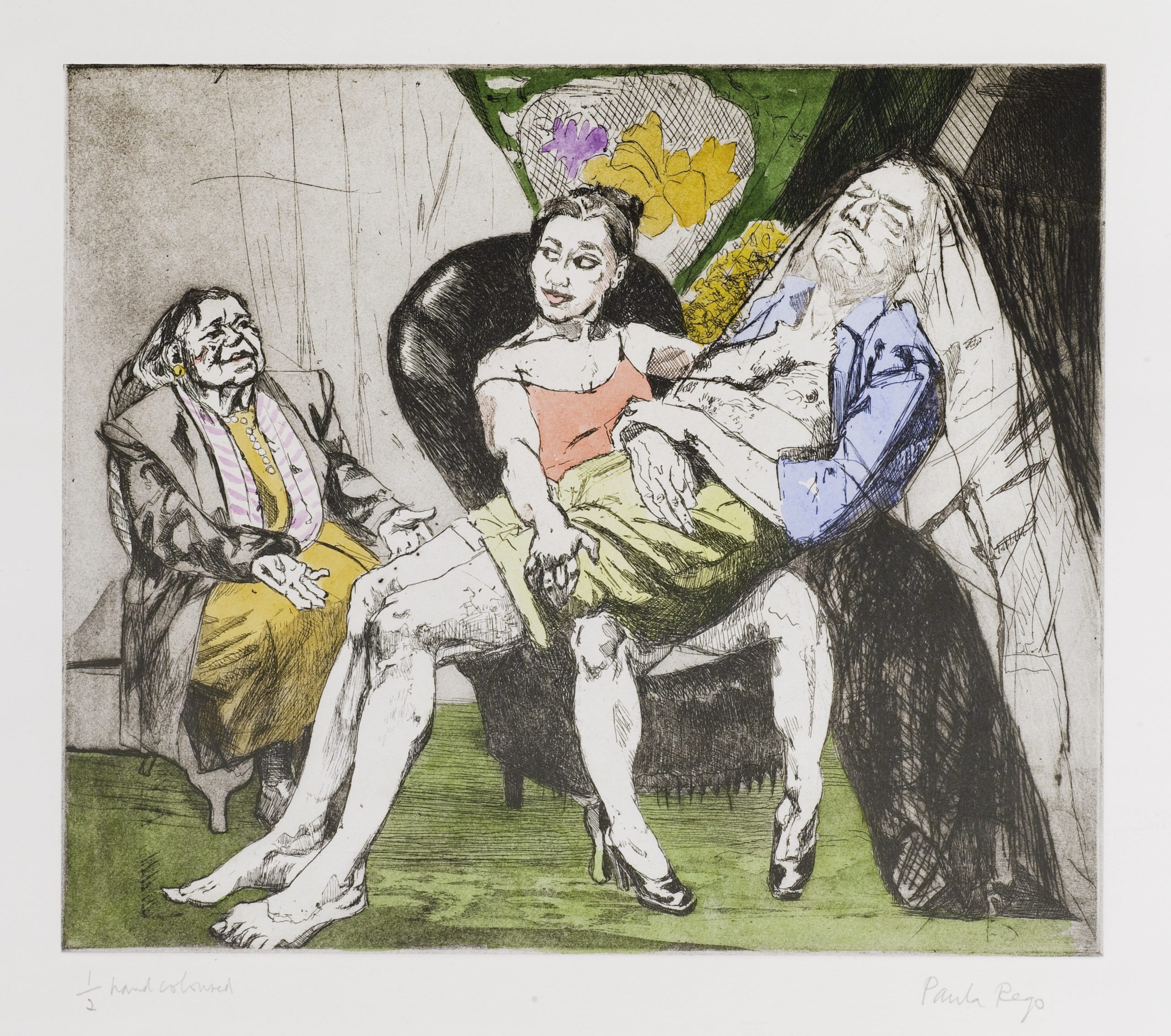
PAST EVENT: Paula Rego at Hogarth’s House
Hogarth’s House is hosting a selection of 42 works by Paula Rego including Prints, lithographs etchings and more.
Now extended until February 27th 2022!
An artist of remarkable imagination her work has forever changed the representation of women in figurative art. This exhibition will display works from throughout the artist’s career and explore how her admiration for William Hogarth has inspired elements of her work.
This exhibition contains a series of work relating to the sensitive topic of abortion.
PAULA REGO
Dame Paula Rego was born in Portugal in 1935 and now lives in London. She is recognised as one of the most significant artists of her time, whose extraordinary imaginative power has played a key role in redefining the possibilities of figurative art. She has turned to folk tales and nursery rhymes for her subjects, as well as to stories from her native Portugal and the injustices of sexual politics, which she interprets with a unique perspective.
Honoured by the Queen with a Damehood in 2010, she is the subject of a major retrospective this year at Tate Britain (7th July – 24th October).
For information about this exhibition, click here
Hogarth’s House is delighted that she has accepted our invitation to exhibit a selection of her works here.

THE ART OF PRINTMAKING: ENGRAVING, ETCHING AND LITHOGRAPHY
Hogarth’s ‘Progresses’ were originally executed in oil paint on canvas. However, to reach a mass audience he reproduced them as engravings, which he made by cutting the designs into copper plates. These plates were then inked and printed, with many impressions made from each plate. These prints were cheap to buy and immensely popular. Good examples of them are on display at the House, together with one of the original copper plates.
Paula Rego works in etching and lithography. To etch a plate, the artist draws the lines with a needle directly onto a copper plate that has been prepared by being covered with an acid resistant ground. The plate is then placed in an acid bath and the drawn lines, which have exposed the metal beneath the ground, are etched into the plate by the acid. Etchings are printed in the same was as engravings. The tones are achieved with a process called aquatint. Sometimes individual prints are hand-coloured.
Hogarth also made etchings, such as ‘The Laughing Audience’ which is on display at the House.
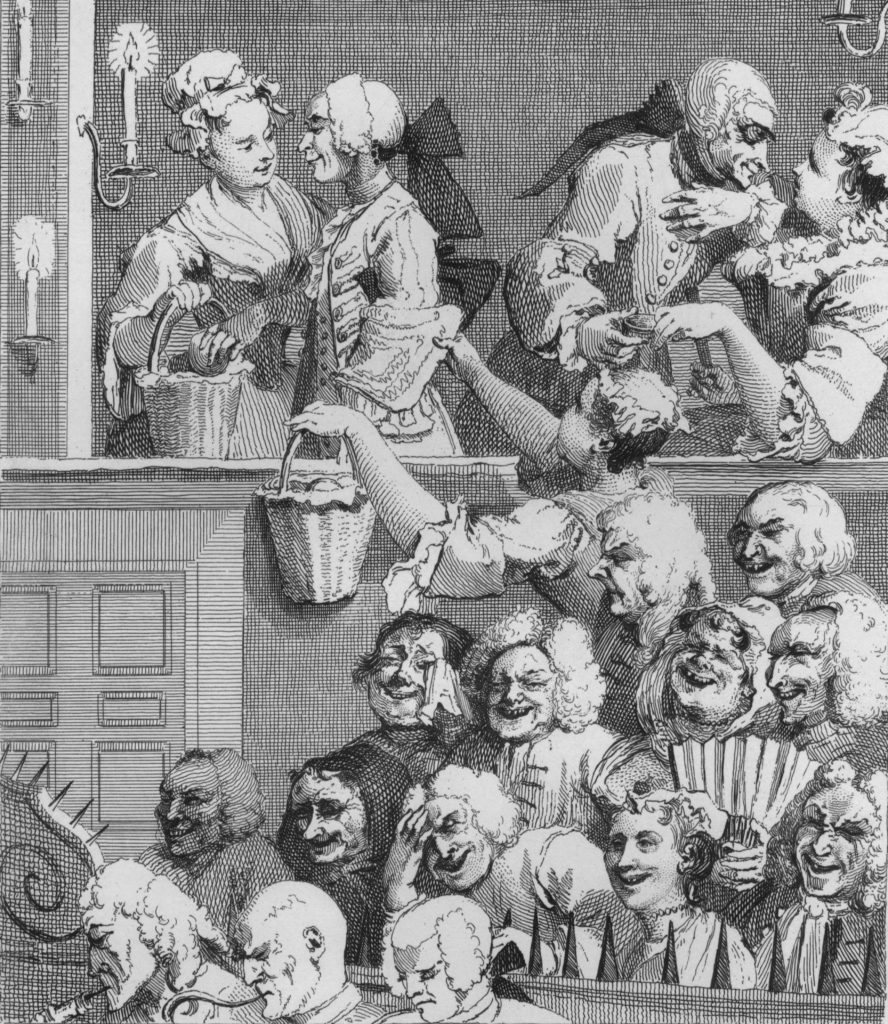
Lithography is a process invented in the 18thcentury and was used by artists such as Toulouse-Lautrec and Manet. The prints in the series ‘Jane Eyre’ are all lithographs.
Watch Paula Rego working on a lithograph here
PAULA REGO AND HOGARTH
In 2000 Rego made her own response to Hogarth’s ‘Marriage a la Mode’, with a three-part series called The Betrothal-Lessons-The Shipwreck, after ‘Marriage a la Mode’ by Hogarth, which is now in the Tate’s collection.

Hogarth’s original series of paintings shows an arranged marriage motivated by self-interest and greed that inevitably ends in tragedy. He depicts the marriage being plotted by the fathers of the two partners. However, Rego reverses things – in her series it is the mothers who do the scheming.
Hogarth has always been one of Dame Paula’s favourite artists and a has been big influence on her own work.
‘Hogarth shows everything. He’s a wonderful painter of chaos and cruelty’, she says.
‘Hogarth is a very English painter of what goes on. He paints it all. He tells it in the form of a narrative so there are usually four or five pictures, like a comic, depicting various stages of people’s relationships and how things were.
‘Curiously enough, sometimes Hogarth, who was such a popular, down-to-earth painter, includes figures who seem to have come from religious paintings. In Marriage à la Mode, the dying husband is standing wounded. He’s just about to keel over and his wife is kneeling before him as you might kneel before the figure of the cross. It reminds me of a Pietà.*
‘In spite of the cruelty, there’s also a great deal of tenderness for the people in Hogarth’s pictures. He’s a curious mixture, which I find very startling, and that’s what I like.’
*Pietá is a traditional image of the Virgin Mary grieving over the body of the dead Christ.
Rego’s etchings entitled After Hogarth relate to the end of the story of the disastrous marriage that she shows in her large-scale triptych.
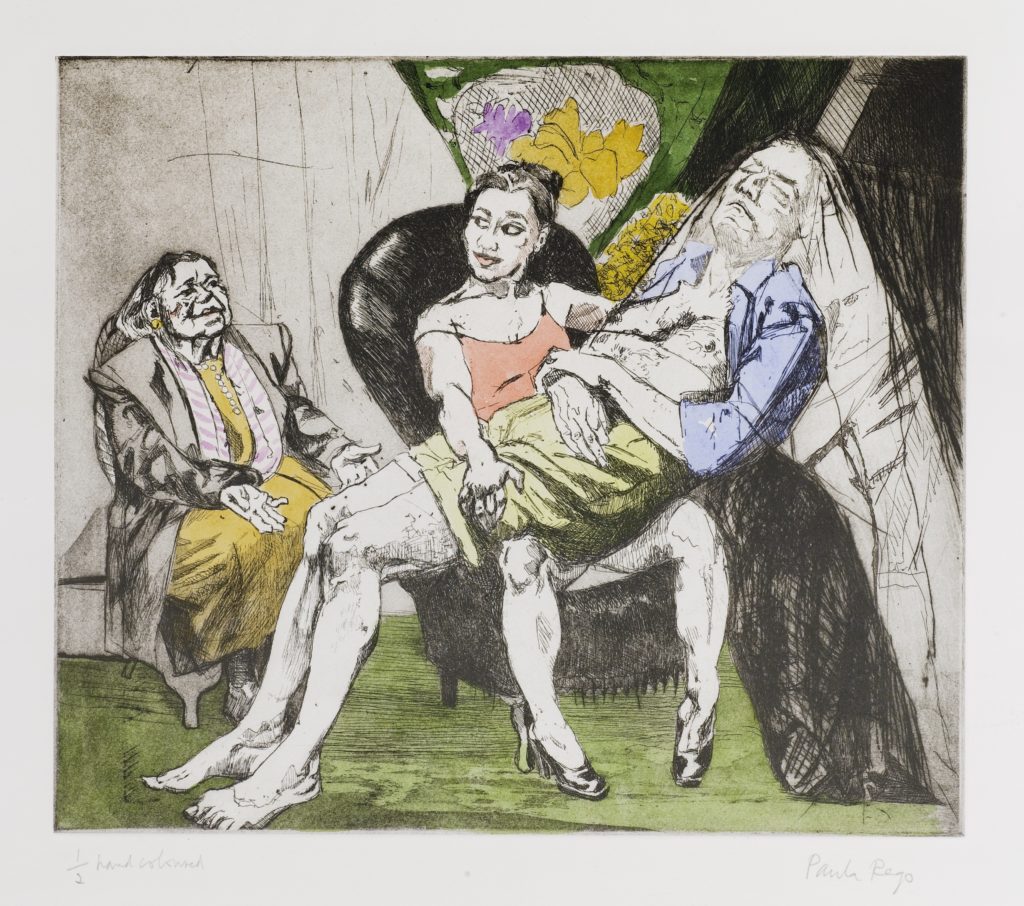
THE WINE SERIES
To mark this exhibition, we are delighted to announce that Dame Paula has presented this set of six prints to Hogarth’s House, for our permanent collection. Our grateful thanks go to the artist. We are sure that Hogarth himself would have been delighted to welcome into his home this remarkable fellow artist who has so much in common with him.
They were inspired by Hogarth’s Gin Lane. The series was originally commissioned by a wine company to be reproduced on wine labels. However, when they saw the finished works, all made with a true Hogarthian spirit, the company had second thoughts and they were never produced.
‘There’s Gin Lane, which everybody knows, with a child falling over the bannister and the mother taking something from a tin.’ Says Rego. ‘The gin has done her in, everyone is pissed in the street, which isn’t that different from what happens on a Saturday night in Britain today.’
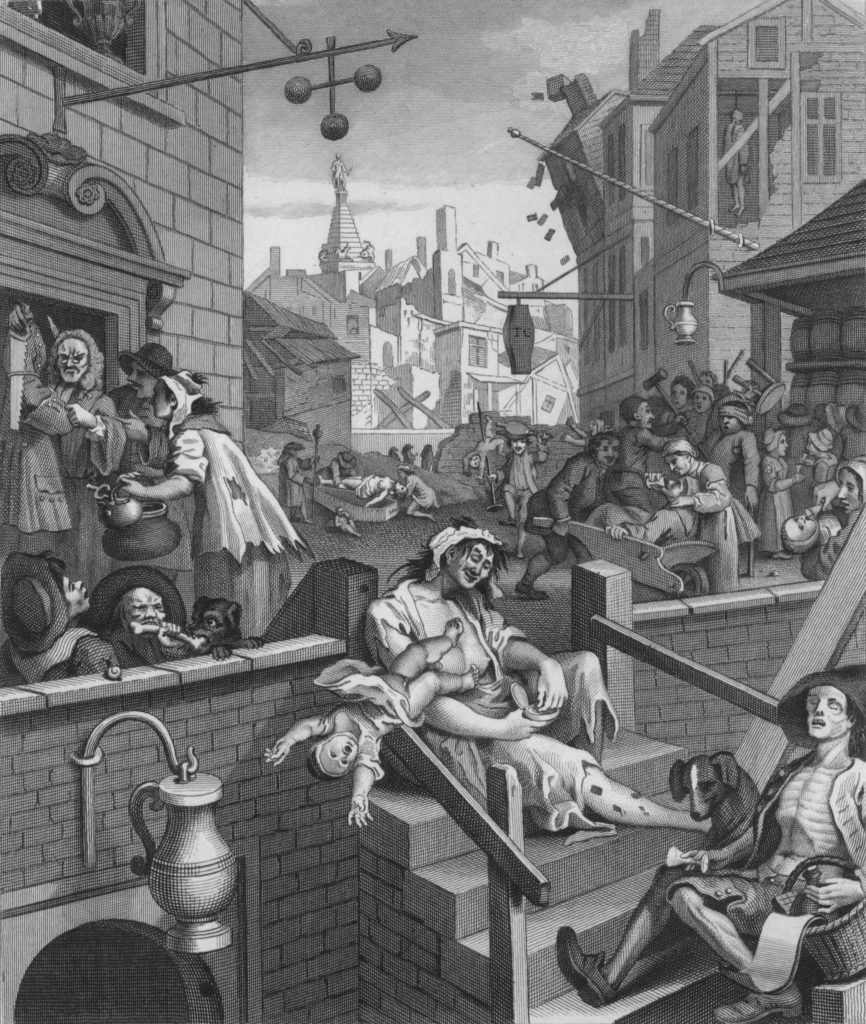
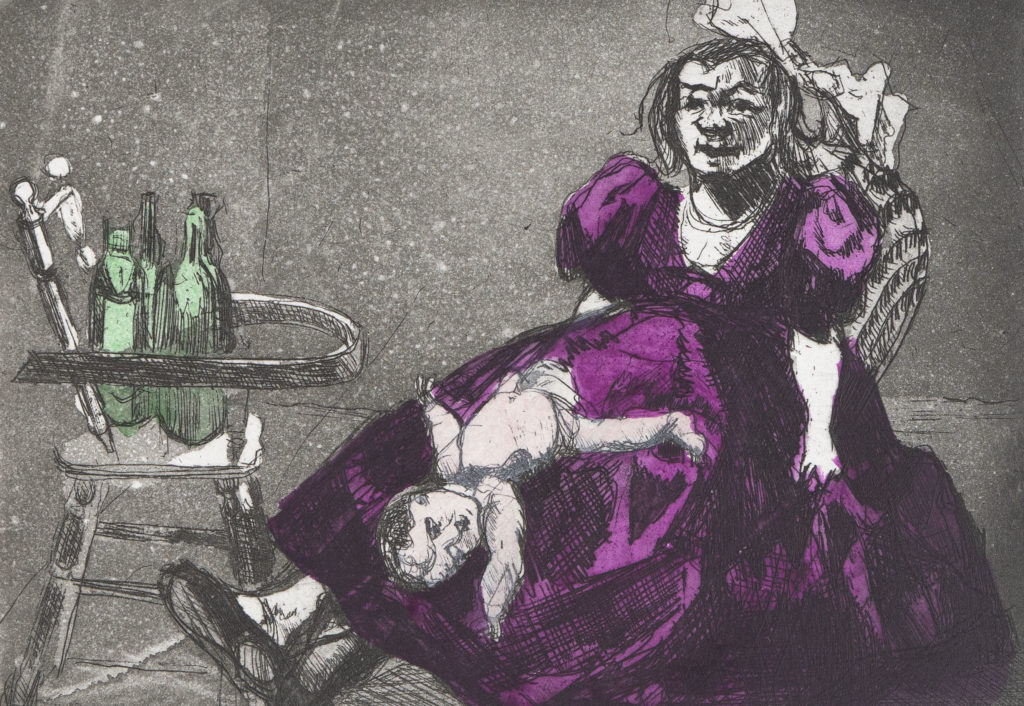
NURSERY RHYMES
The earliest prints here are etchings, taken from the artist’s Nursery Rhymes series of 1989.
Traditional nursery rhymes, so familiar to us all, are filled with stories that can be both amusing and grotesque, charming or sinister and are open to a whole variety of interpretations. Rego’s bold graphic technique renders the tales they tell instantly recognizable but her vivid imagination adds qualities that can both frightening and disturbing or simply joyously comical.
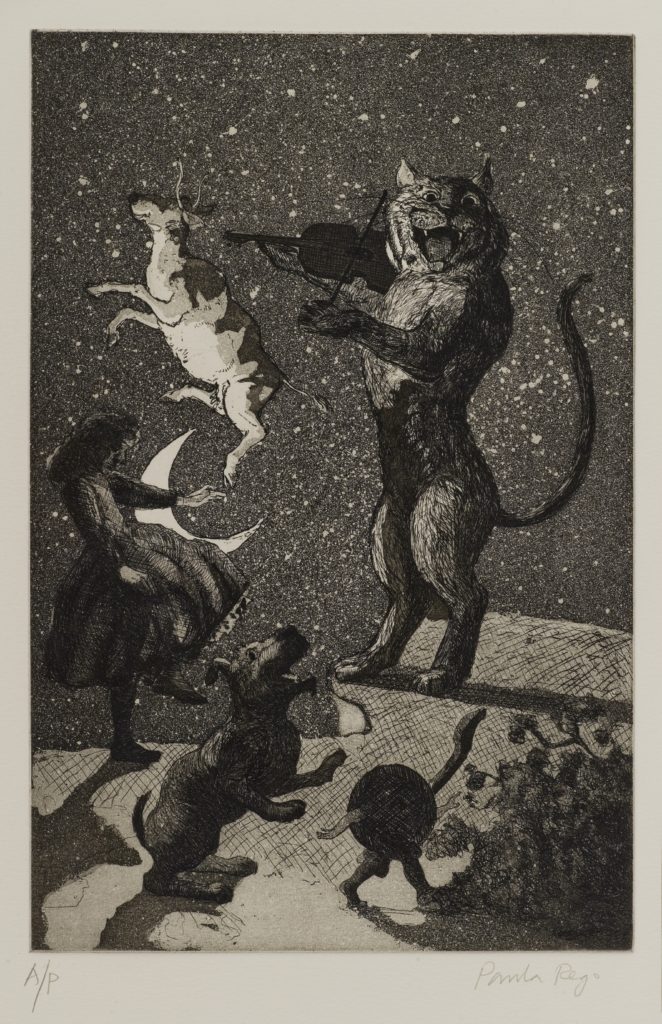
PENDLE WITCHES
In 1612, a group of twelve women living in the Lancashire village of Pendle were accused of witchcraft and sent for trial. One was found not guilty and the other eleven were sentenced to death and all were hanged. Belief in witchcraft at the time was commonplace and indeed the king, James I, had a well-documented fear of witches.
This series was inspired by a series of poems by Blake Morrison (b 1950) that was published in 1996, with Rego’s prints as illustrations.
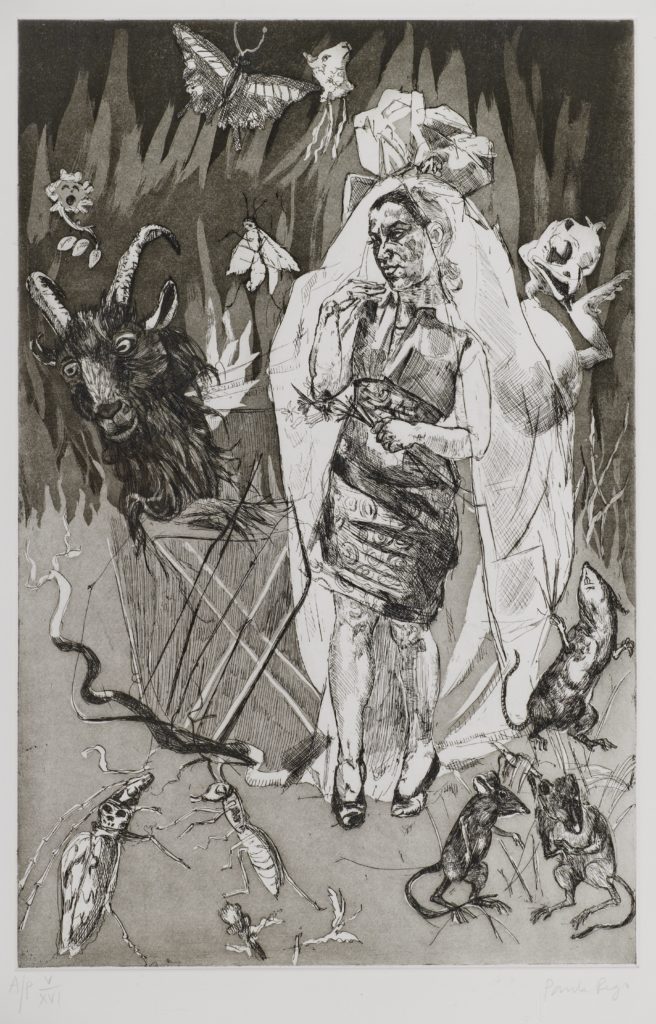
THE CROW
The Crow series of 1994 consists of four prints, all of which are shown here. While making these prints, Rego visited a hospital for injured crows, so she could observe the birds directly. However, the crows in the resulting prints look far from injured and have a sinister, menacing power of their own.
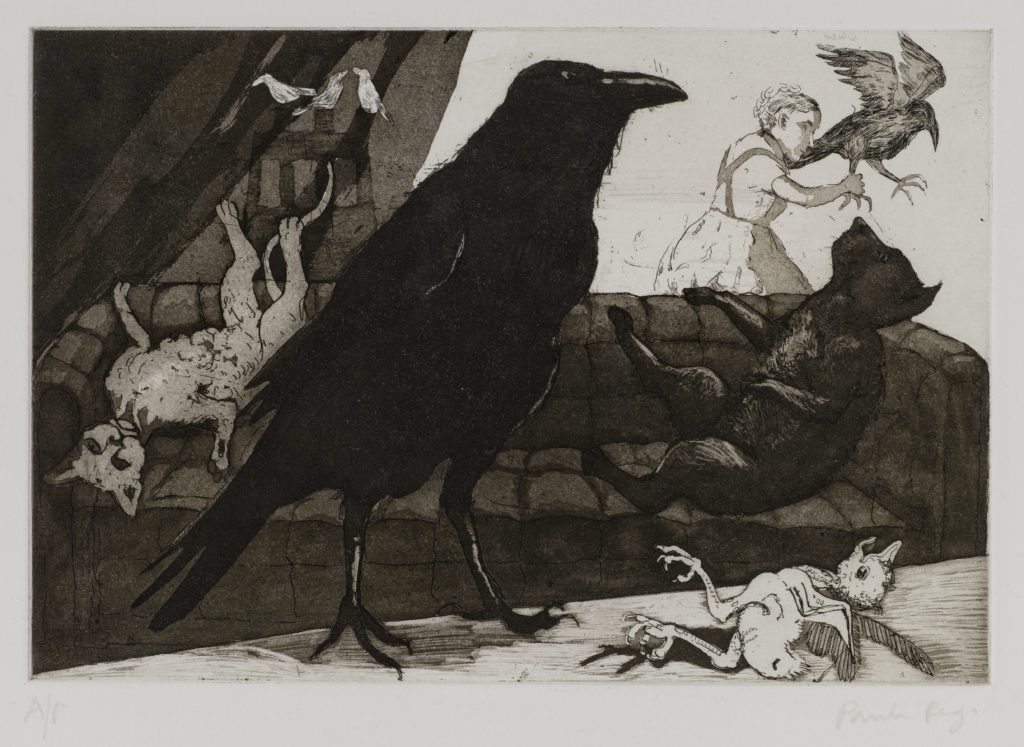
JANE EYRE LITHOGRAPHS
Since its publication in 1847, Charlotte Bronte’s astonishing Gothic melodrama has been the subject of many adaptations made for cinema, television and the stage. It is a novel that deals with themes of child abuse, mental illness, disability and the power structures of class, gender and race. These are issues that are constantly debated and re-assessed by each generation.
It has been suggested that Rego’s own biography led her to work from the novel as a source for her work. When a student at the Slade 1952-6, she began a relationship with an older fellow student, Victor Willing, who was already married. After he obtained a divorce, they married in 1959 but in 1966 he was diagnosed with multiple sclerosis and he spent his last months with round the clock nursing care, before he died in 1988. The parallels with Jane’s story are striking.
Read Dame Marina Warner on Paula Rego’s Jane Eyre lithographs here

PAULA REGO ON THE FOUR STAGES OF CRUELTY
‘Hogarth shows everything. He’s a wonderful painter of chaos and cruelty. He creates extraordinary images, such as the dog having an arrow shoved up his bum in the series The Four Stages of Cruelty. The first plate shows children and adults treating animals dreadfully; in the second, a man called Nero is beating his horse mercilessly; in the third, he is a highway robber who has been arrested having obviously killed his pregnant girlfriend, who is lying on the floor with bundles. The last plate shows the most violent scene: Nero’s body being eviscerated for the purposes of medicine. Physicians are taking out his guts and there’s a dog eating his heart – good revenge.
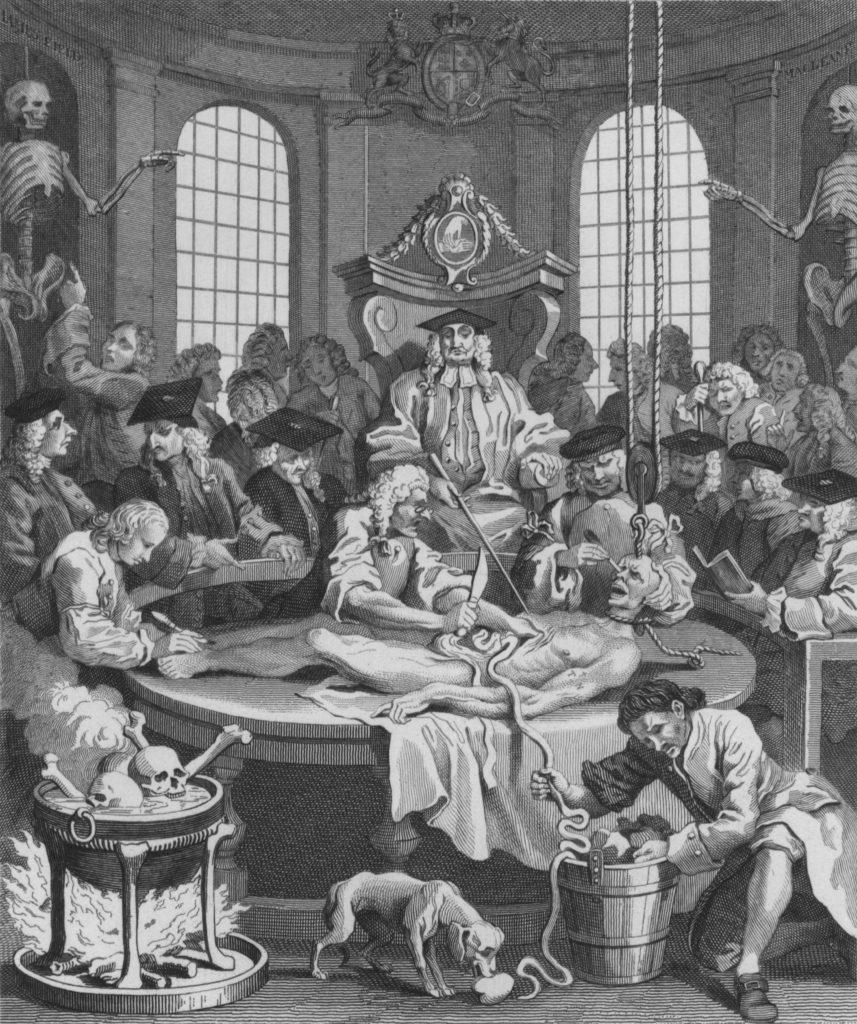
ABORTION
In 1998, a referendum was held in Portugal that asked whether abortion, which was then strictly forbidden, should be allowed. The turnout was low and the idea was rejected.
In response, Rego made a series of pictures on this difficult and contentious theme. These works were exhibited in Portugal and they inspired much debate and controversy in a conservative and deeply Catholic country. The artist’s motivation was anger.
‘I got so angry because I’d seen it all in Portugal – the suffering that went on when abortion was totally illegal. It was mind-boggling.’
Wishing for a wider audience she made a series of etchings on the subject.
‘It highlights the fear and danger of an illegal abortion, which is what desperate women have always resorted to. It’s very wrong to criminalise women on top of everything else. Making abortions illegal if forcing women to the back street solution. ‘
Read more about Rego’s ‘Abortion’ series here
